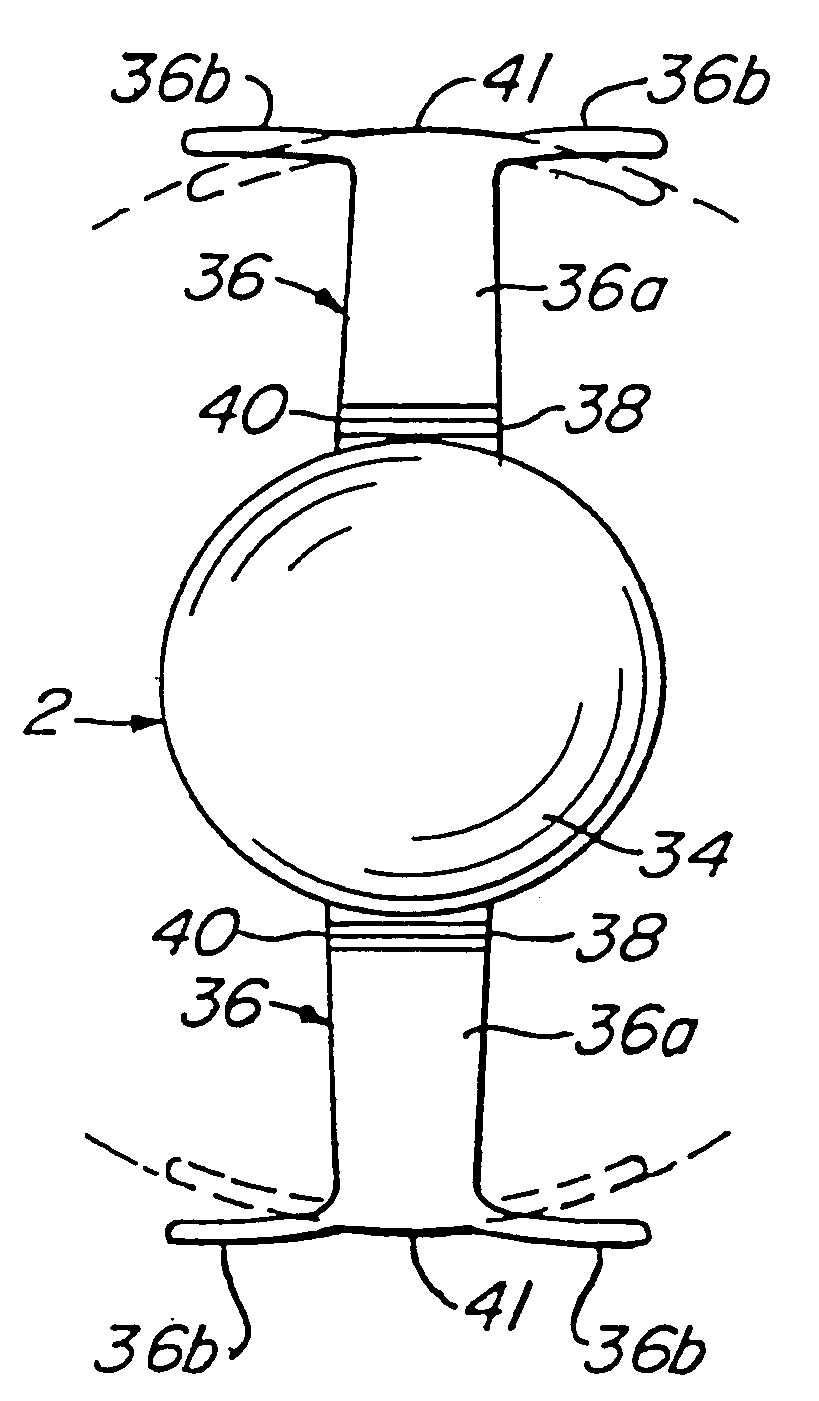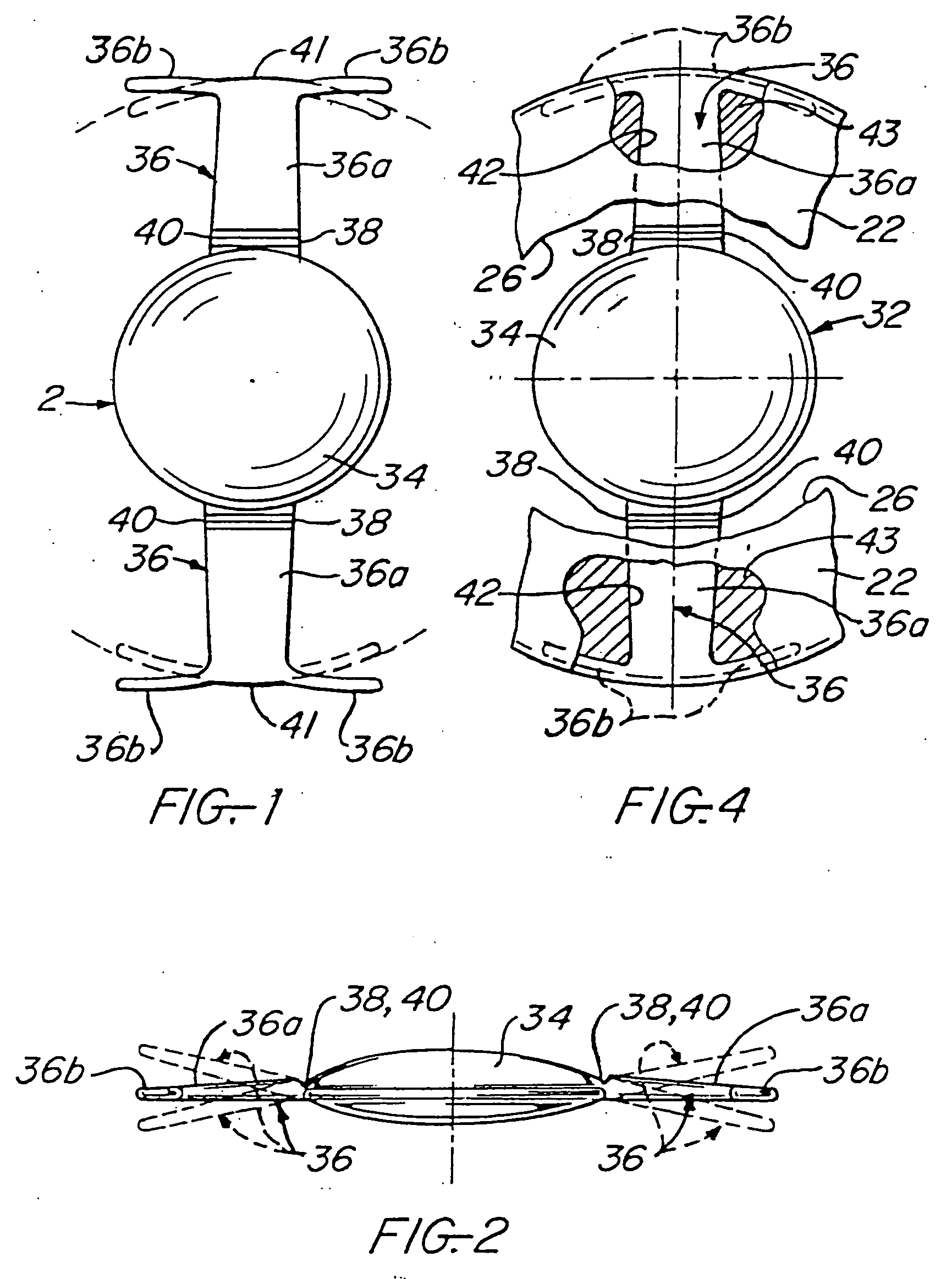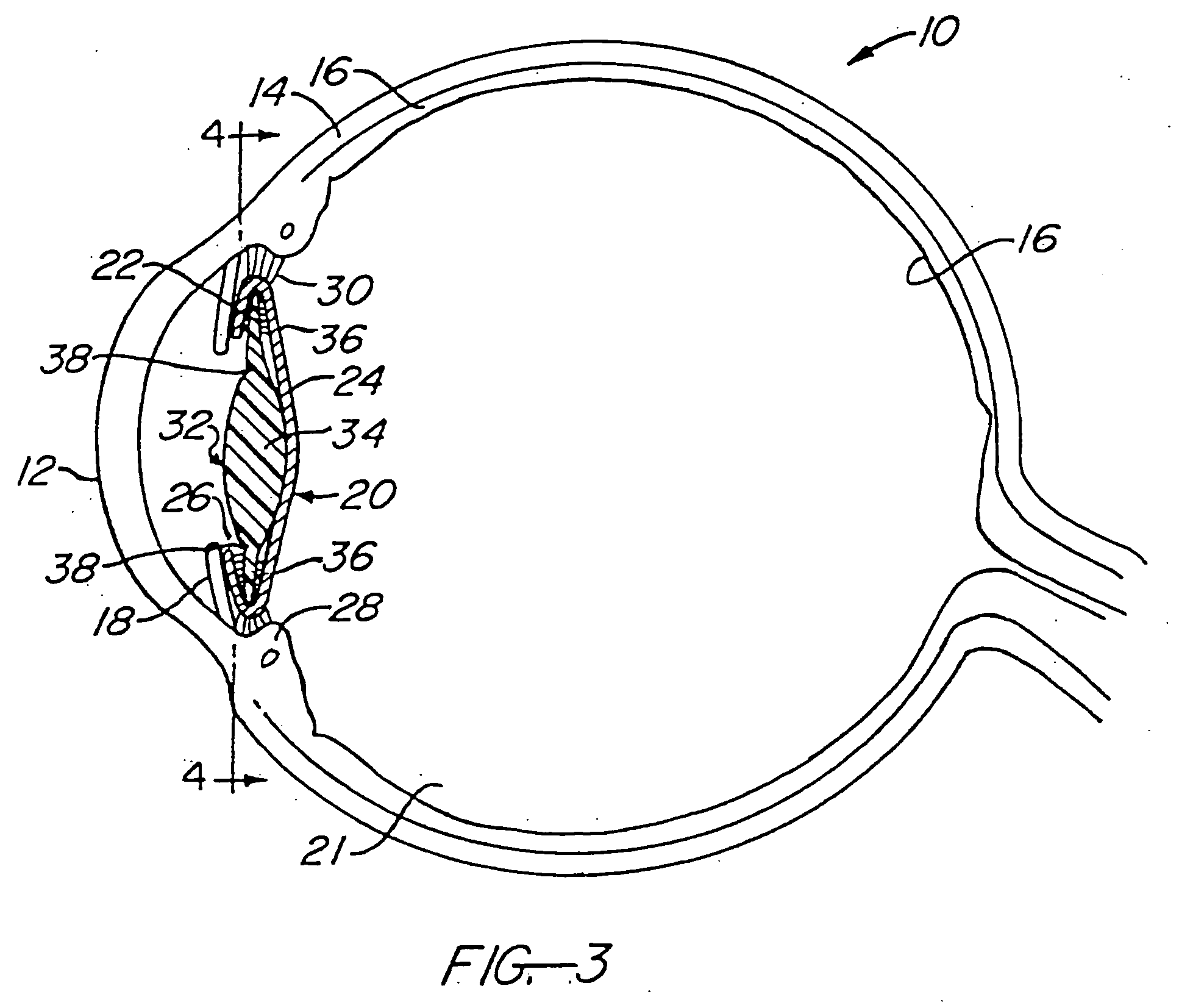Accommodating intraocular lens having T-shaped haptics
a technology of haptics and accommodating lenses, which is applied in the field of intraocular lenses, can solve the problems of fibrosis tissue pockets that cannot be easily formed, and achieve the effect of increasing the accommodation amplitude of the lens, increasing the optical power of the lens, and thereby the amoun
- Summary
- Abstract
- Description
- Claims
- Application Information
AI Technical Summary
Benefits of technology
Problems solved by technology
Method used
Image
Examples
Embodiment Construction
[0054] Turning now to these drawings, and first to FIG. 3, there is illustrated a human eye 10 whose natural crystalline lens matrix has been removed from the natural lens capsule of the eye through an anterior opening in the capsule formed by an anterior capsulotomy, in this case a continuous tear circular capsulotomy, or capsulorhexis. As noted earlier, this natural lens matrix, which is normally optically clear, often becomes cloudy and forms a cataract which is cured by removing the matrix and replacing it with an artificial intraocular lens.
[0055] As mentioned earlier, continuous tear circular capsulotomy, or capsulorhexis, involves tearing the anterior capsule along a generally circular tear line in such a way as to form a relatively smooth-edged circular opening in the center of the anterior capsule. The cataract is removed from the natural lens capsule through this opening. After completion of this surgical procedure, the eye includes an optically clear anterior cornea 12, ...
PUM
 Login to View More
Login to View More Abstract
Description
Claims
Application Information
 Login to View More
Login to View More - R&D
- Intellectual Property
- Life Sciences
- Materials
- Tech Scout
- Unparalleled Data Quality
- Higher Quality Content
- 60% Fewer Hallucinations
Browse by: Latest US Patents, China's latest patents, Technical Efficacy Thesaurus, Application Domain, Technology Topic, Popular Technical Reports.
© 2025 PatSnap. All rights reserved.Legal|Privacy policy|Modern Slavery Act Transparency Statement|Sitemap|About US| Contact US: help@patsnap.com



